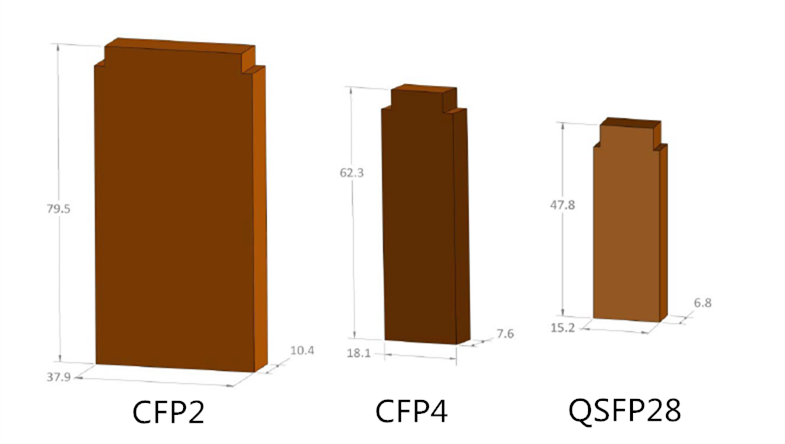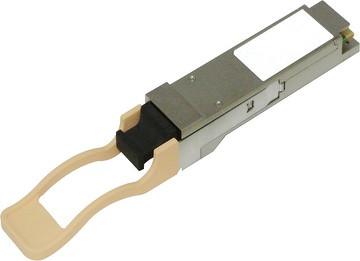- Related articles
- Used in 10GBASE-ZR Standard Optical Transceiver Models
- The Difference between Internal Network Card and USB Wi-Fi
- What Is GYTY53 Fiber Optic Cable?
- What is Ethernet PCMCIA card?
- Optical Transceivers for Cisco SLM248PT-G5 Switch
- All Cisco SFP-GE-S's information (List price, Specs, Datasheet PDF, Compatibility matrix)
- Optical Transceivers for Cisco SG500-52MP-K9-G5 Switch
- What Is GYFTY53 Optical Fiber Cable?
- Applicable to 100BASE-EX Standard Optical Transceiver Models
- Optical Transceivers for Cisco IE-2000-8TC-L Switch

100G network development direction is 10G → 40G → 100G, 100GBASE QSFP28 optical module appears, there are already some data centers have begun to use this method before the emergence of 100Gase QSFP28 optical module (one can support the 100G transmission of optical modules) to achieve the 10G upgrade to 100G. So, the question came, why would there be the 100GBASE QSFP28 light module? Does the QSFP28 optical module completely replace other 100G optical modules? How will the QSFP28 optical module change the data center? After reading this article, I think you will find the answer.
Advantages of QSFP28 optical modules
The cost and power consumption of the data center is one of the important factors that its builders need to consider, which is also an important driving force for the development of optical communication market. Looking back on the development of the 100G optical module, the development and improvement of its packaging style (CFP, CFP2, CFP4) and standards are mainly focused on low cost and low power consumption. QSFP28 optical module just meets these requirements, the following were compared from the port density, power consumption and cost of three aspects of the QSFP28 optical module and other 100G optical modules.
Port density
The first generation 100G optical module is a very large volume of CFP optical module, followed by the emergence of CFP2 and CFP4 optical module, CFP4 optical module which is the latest generation of the 100G optical module, the width only 1/4 of CFP optical module, Size is consistent with QSFP + optical module package size. The QSFP28 optical module has a smaller package size than the CFP4 optical module, which means that the QSFP28 optical module has a higher port density on the switch. In fact, a total of 36 QSFP28 optical modules can be installed on the front panel of a 1RU switch.

Power consumption
QSFP28 optical module power consumption is usually not more than 3.5W, while the other 100G optical module power consumption is usually between 6W to 24W. In view of this, QSFP28 optical module is much lower than other 100G optical module power consumption.
cost
The current data center is mainly 10G network architecture, the interconnect solution is mainly 10GBASE-SR optical module and duplex LC multimode fiber jumper, if directly upgrade to 40 / 100G network within the existing 10G network architecture will save a lot of time and cost. As a result, one of the major interconnection trends in the data center is to upgrade from a 10G network to a 40/100G network without changing the existing duplex multimode base network architecture. In this case, the MPO / MTP branch cable is undoubtedly the ideal solution for the 10G to 40 / 100G upgrade.
How will the QSFP28 optical module change the data center?
The QSFP28 optical module can be upgraded directly from 25G to 100G without going through 40G. In addition, QSFP28 optical module of the four 25Gb / s transmission channel also meets the 100G Ethernet standard. In the 100G optical fiber link composed of QSFP28 optical modules, the 100G uplink is composed of four 25G links, and each 25G downlink network architecture and 10G network cabling structure exactly the same, the entire network transmission capacity Greatly increased. Therefore, compared with 10G → 40G → 100G upgrade, 10G → 25G → 100G upgrade method can greatly simplify the data center cabling system, reduce the cost of cabling system and cable density. The following table is the QSFP28 optical module of several wiring and specific applications:
|
QSFP28 optical module |
Cabling |
Application |
|
100GBASE-SR4 QSFP28 optical module |
MTP / MPO multimode fiber jumper |
100G interconnection of transmission distance < 100 m |
|
100GBASE-LR4 QSFP28 optical module |
Duplex LC single-mode fiber jumper |
100G interconnection of transmission distance < 10 km |
|
100G QSFP28-QSFP28 high-speed cable |
100G interconnection of transmission distance < 5 m |
|
|
100G QSFP28-4x25G SFP28 high-speed cable |
100G to 25G connection of transmission distance < 5 m |
|
Conclusion: will QSFP28 completely replace other 100G optical modules?
Although the QSFP28 optical module has many advantages, it is only one of the solutions to the 100G network. As for the data center and server room and other specific applications, the right is the best, so the other 100G optical modules will be in a place in the 100G network.






































































